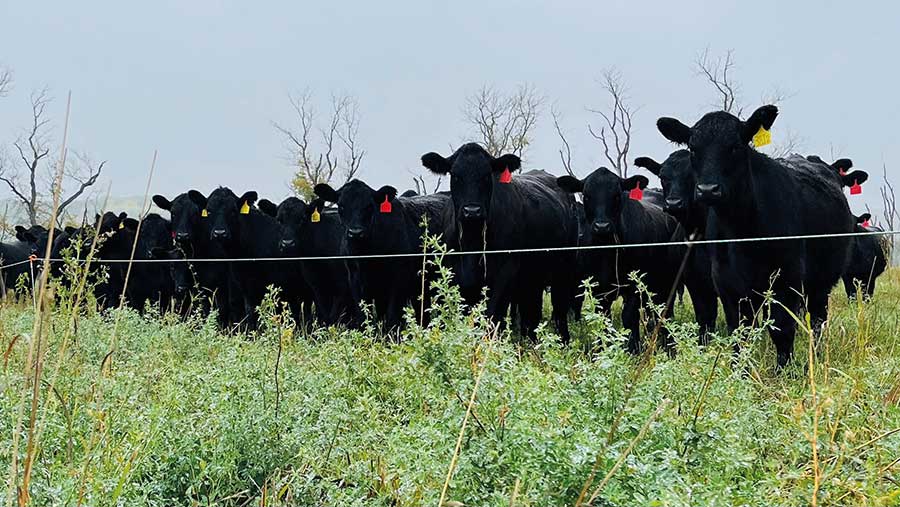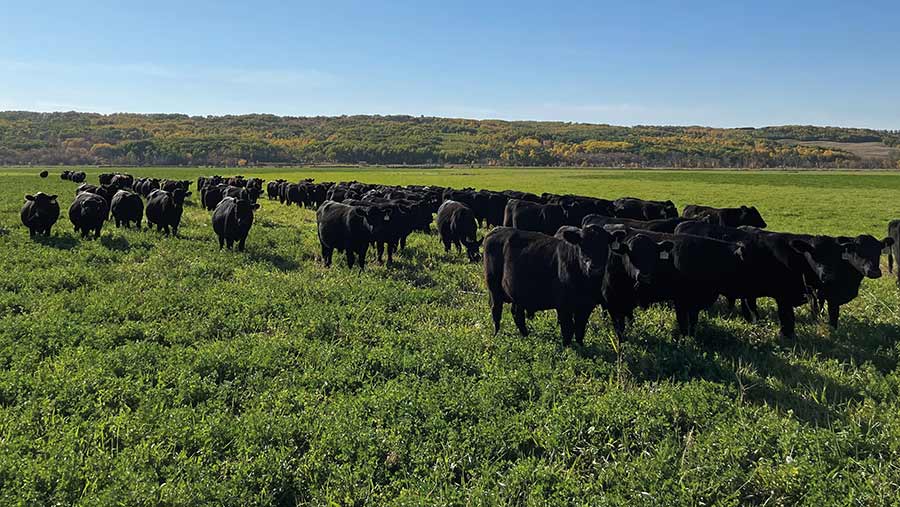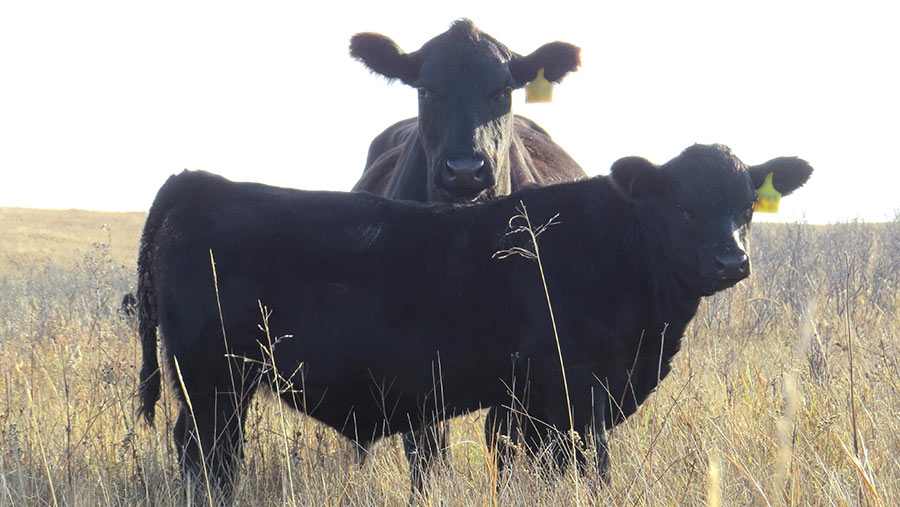How a Canadian breeder created a simpler suckler system
 © Arron Nerbas
© Arron Nerbas Canadian cattle breeder Arron Nerbas has harnessed the power of epigenetics to improve ease of fleshing, fertility and foraging ability in his cows.
Cows run with the bull for 55 days instead of 65-70, and are on winter feed for 120 days, compared with 165 days 20 years ago.
Mr Nerbas sees epigenetics as the way the environment and management affect the genetic direction of the herd he runs in Manitoba with his brother, Shane, his parents, Cynthia and Gene, and their respective families.
See also: 6 things that can affect lifetime milk production
Farm facts
- 550 pure Aberdeen Angus cattle, with 475 cows and a nucleus of 75 pedigree, unrecorded females
- 2,023ha (5,000 acres) of rangeland
- 100% forage-based system
- Sells about 70 breeding bulls annually
Epigenetics is complex, but the Nerbas family have stuck to very simple breeding goals to apply strict selection pressure to the cows to produce a profitable herd.
This means:
- Finding cows that are the most efficient harvesters of forage and rear a calf annually with minimal intervention throughout the year (the herd is only handled four times)
- Breeding a moderately sized cow at about 570kg mature weight
- Ensuring cows have sufficient milk to produce a calf above average weaning weight
- Animals must hold their body condition score to weaning (body condition score 3) and put on half a condition score on bale grazing before calving.
What is epigenetics?
- Epigenetics is how the environment (feeding, management, weather and so on) affects the expression of a cow’s genes
- The changes do not alter the DNA sequence, but change how they are read
- Importantly, epigenetics applies to calves in gestation – known as foetal implanting – and throughout life

© Arron Nerbas
Regenerative model
The herd is run on a regenerative model and focuses on finding the cows that suit this system.
Mr Nerbas believes the epigenetic changes in the herd have come from developing a low-cost, low-input system that breeds for fertility with short calving intervals.
Once breeding goals and parameters are set, the key is to take as much human interference out as possible and let the cows select themselves, he adds.

© Arron Nerbas
“We have applied continual management pressure across our whole herd for years. By not focusing on individuals and having a herd-first approach, only the type of cow we want stays in the herd.”
This approach breeds consistency, he says.
“You could evaluate individual animals and chase their performance, but then you would end up with a herd full of cows with different input requirements, which just doesn’t work for us.”
Breeding strategy – closing the gap
A nucleus herd of 75 pedigree, unrecorded females has been used to breed some of the stock bulls.
This nucleus herd has been keeping track of cow families to see what effects can be seen on herd performance by introducing different traits.
The business has invested in the best grass-fed genetics it can afford through 20 years of artificial insemination.
The family plans to move to a fully closed herd in the coming years and produce stock bulls from the nucleus herd so they breed from cattle that thrive in their system.
Genetic gains
“This is a gamble in some ways, but we feel our genetics are now in the right place for our business,” explains Mr Nerbas, who will monitor inbreeding carefully alongside a new genomics programme the herd is starting to use.
“Although we are closing short-term, it doesn’t mean we can’t bring in genetics later on if that’s what suits us.”
Bulls that fail to make the grade as breeding stock are castrated and sold.
“When we take our steers to auction, there is a difference in the way they look compared with other cattle that have been bred for growth and carcass traits. We don’t receive any less for them, though,” says Mr Nerbas.
The top two-thirds of heifers are selected as replacements, with the remainder sold for breeding.
Replacement bulls and heifers are selected by eye first with a keen focus on type, with animals chosen that have deep, capacious bodies for foraging and calving.
Extremes are avoided, both physically and in terms of estimated progeny difference.
“The largest and smallest heifers are avoided from the initial selection of heifers,” says Mr Nerbas.
“The pedigree replacements go through the same process, but pedigrees and families are considered to keep the herd balanced for future matings.”
Excessive milk, carcass and growth values have been consciously avoided on bulls.
Artificial insemination sires have been selected from similar systems with moderate figures for weaning weight, yearling weigh, and milk. The only trait really sought out has been feed efficiency.
Management
Grazing is extensive, with one cow stocked to every 4ha (10 acres), and they work on the principle of resting 95% of the land at any one time by keeping cattle on two- to three-day moves.
On average, pasture is grazed 1.5 times/year, but some more productive areas will be grazed three times.
Combined with bale grazing and rotational grazing through the winter, the feeding period is now 120 days. All cattle are outwintered, calve outside and no artificial fertiliser is used.
“We don’t like to do anything that a cow could do herself. So, if any of the forage goes to seed, we’ll just stock that area at a higher rate for a couple of days to allow the cattle to trample the seeds in and improve the lay for next year.”
UK visit
Arron Nerbas will be visiting the UK in January 2023 to speak at the 75th British Cattle Breeding Conference in Telford and to take part in some on-farm events as part of the AHDB Maternal Matters campaign, supported by the Aberdeen Angus Society. Find out more at the British Cattle Breeding Association website.
